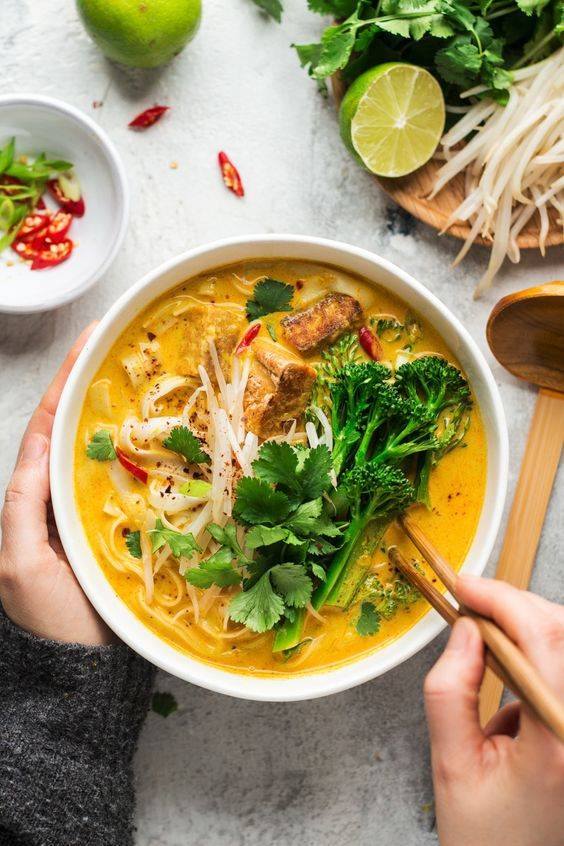The macrobiotic has already changed the world and it will continue to do so. Although in the 1960s and 1970s, even the FBI tried to stop the macrobiotic movement, burning its books and arresting people, it lived on.
Ultimately, I’m here to narrate my experience with macrobiotics.
And it is almost correct… The macrobiotic has already changed the world and it will continue to do so. Although in the 1960s and 1970s, even the FBI tried to stop the macrobiotic movement, burning its books and arresting people, it lived on.
A few years ago I went through a unique and rare experience.
In a word: macrobiotic.
Although many are familiar with this discipline for having gone from the spotlight to total anonymity, you should be more aware of what its contribution to humanity has been and still is.
Unfortunately, it takes this article to expose the light and shade of a millenary knowledge that has influenced science and philosophy more than any other diet and principle in existence. Yes, because macrobiotics is connected to the disciplines of ancient Chinese theories, including Yin and Yang, Taoism and medicine of the past. Macrobiotics is a term that comes to us from Hippocrates, the Greek physician and father of Western medicine, whose meaning can be encapsulated in two words: Long Life. It is said that Hippocrates learned the art of long life in the East and that it influenced his principles as a physician. One of the cornerstones of Macrobiotics is ‘depends’; we will soon see in detail what this means. In connection with such a topic, Hippocrates advised the sick person to change his or her location, as he realised that the very place where we live is often the cause of our illness.
One step at a time.
Meanwhile, whether they are true stories or not is of little importance. The point is another, in itself, this short parenthesis on Hippocrates highlights a great truth: the environment in which we live can positively or negatively influence our state of physical and mental health.
You disagree, don’t you?
If you disagree, I invite you to continue reading.
For five years, I was part of a cultural association that somehow changed the world. When I joined them as a chef and (shortly after) as a speaker, it had already existed since the early 1980s and was fighting for better food (even better than organic), a more balanced diet and transparent labelling on products sold in supermarkets. Seeing that things were not changing, the founder Mario Pianesi, together with a small group of supporters, began to open macrobiotic centres around Italy, cultivating (over the years) seeds from ancient grains or legumes (therefore not genetically modified by big companies but natural, selected by farmers as mother nature made them). Ancient seeds, at the moment, are something I have only found in Italy, which is a pity because besides being beneficial for the environment, they have a healing effect on the body.
Obviously, the big companies have had to modify their seeds to have a higher yield and thus be able to trade them.
Ancient seeds behave a little differently and, at least in Italy, are grown without chemicals and often together with other plants. In fact, Mario Pianesi has come up with the idea of polyculture, in which in one plot of land you have trees and vegetables that grow and feed each other. So, no monocultures that are now contributing to the impoverishment of the soil and require a lot of chemicals to function.
There was a saying within the association: if it is good for nature, it is also good for the body.
In Italy, although the association has been reformed, there are still affiliated centres where you can find their products.
If you take a trip to my beautiful country, and you are interested in wellness, you should certainly visit them.
Now to diets.
Macrobiotics is a discipline that changes over time, progressing along with society and the needs and knowledge of the historical period under consideration.
Doctors and scientists in every era have taken macrobiotic as a reference point because they understood its importance both as a remedy for ills and as a philosophical principle and lifestyle.
Here I list some of the macrobiotic principles.
– Natural foods (or as natural as possible, grown without chemical fertilisation and the like)
– Specific diet according to the individual’s state of health (we will see what this means in a moment)
– Local products (sourced as close as possible to the area served)
– Water with a sodium-potassium ratio as close as possible to 1:7 (most commercial waters are too alkaline. The sodium-potassium ratio should be similar to that of the heart which is 1:7 or 1:5).
– And much more.
It is difficult to collect the nuances and knowledge of this subject in one article.
Suffice it to say here that a certain George Ohsawa brought macrobiotics from Japan to the West, as he was the first witness to its actual functioning. In the past, there were other luminaries, but none like Ohsawa managed to root macrobiotics in the modern age, and we are talking about a century ago at least.
After Ohsawa (who wrote hundreds of books on the subject, but you can only find a few on the market), a movement of people, including Michio Kushi and Master Muramoto, was created that helped to spread the subject even further.
Macrobiotics is life.
Mario Pianesi has picked up the legacy of Ohsawa, Kushi and Muramoto, updating and applying the principles of macrobiotics. Over the years, he has collaborated with leading universities and doctors around the world to demonstrate how 5 simple diets can change a person’s state of health.
I participated, as part of a larger team, in an experiment on two groups of type 2 diabetics taking massive doses of insulin. The experiment involved comparing the Mediterranean diet suggested by dieticians with MA-PI 2, a very strict, vegan-style diet (macrobiotic is not vegan, mind you). After 22 days, it was observed that the diabetic patients had reduced their insulin doses to zero. After that, the patients were followed for the next few months on a more varied but still macrobiotic diet.
The MA-PI diet, which is a modern macrobiotic diet (as mentioned), has proven its effectiveness against metabolic diseases, malaria and cancer.
When it is said that science is still searching for the cure to cancer, or that AI will find it, we know that the cure to some of the most terrible diseases has been found, and it is a diet followed by a more sober lifestyle.
Remember Hippocrates mentioned above (?).
That’s right, very often the context in which we live decrees how we get sick.
It should be remembered, that although a proper macrobiotic diet can bring excellent results, on the contrary, there are cases in nature where neither a diet nor a new medicine can work, as recovering from a damaged body is by no means simple. At least five per cent of cases of serious diseases are incurable anyway.
That is life.
However, we can work on the other 95 per cent.
The MA-PI macrobiotic diet, which I know best because I worked in Mario Pianesi’s association, is divided into 5 diets. The first three are called healing diets and are vegan.
Bear in mind that in these diets only products grown without chemicals, as locally as possible, and from ancient seeds (cereals, legumes etc.) are used. This fact allows for maximum effectiveness. In one study, wholemeal pasta/grain was found to be highly beneficial compared to refined pasta, and the same applies to rice. If white rice is a real bomb for our organism, it absolutely must be combined with wholemeal or semi-wholemeal brown rice (but you won’t find it abroad unfortunately). Brown rice is the staple food in the macrobiotic diet. After that come legumes, vegetables, fruit and meat. Cheese or animal derivatives are not mentioned in MA-PI diets. With regard to meat, wild meats and freshwater and saltwater fish are meant. Even meat must come from controlled farms etc.
The MA-PI 4 and 5 diets therefore contain meat, but this is considered to be between 5 and 10% of the entire food intake. In the first place, as mentioned, there are always cereals. This does not mean bingeing on cereals. The macrobiotic meal is a mixed meal combining cereals, cooked and raw vegetables, and protein. The meal is preceded by soup, which will be more liquid in summer and thicker in winter.
Because yes, you should know that portion sizes vary with the seasons.
In conclusion, what does “depend” mean in macrobiotic realm? We will discover it in the next article along with the other intentionally omitted information. Stay connected.


